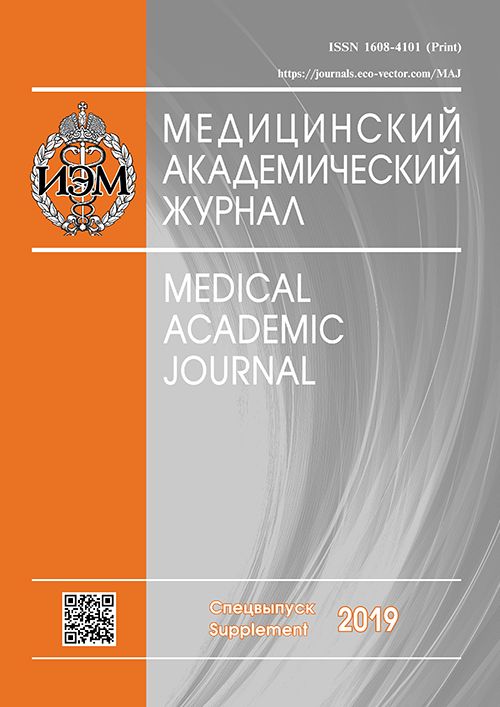CYTOKINE PROFILE OF RAT BLOOD SERUM DURING EXPERIMENTAL BRONCHOPULMONARY INFLAMMATION AND IMMUNOMODULATOR ADMINISTRATION
- Authors: Mokrenko EV1,2, Shabanov PD2
-
Affiliations:
- C.M. Kirov Military Medical Academy, Saint Petersburg
- Irkutsk State Medical University, Irkutsk
- Issue: Vol 19, No 1S (2019)
- Pages: 217-219
- Section: Articles
- Published: 15.12.2019
- URL: https://journals.eco-vector.com/MAJ/article/view/19405
- ID: 19405
Cite item
Abstract
Experimental bronchopneumonia was modeled by administering turpentine to the trachea under ether anesthesia. After the operation, the solution of one of the studied immunomodulators was intraperitoneally administered to the animals for 5 days (1 time/day): polyoxidonium - 0.75 mg/kg, trekrezan 25 mg/kg or metaprot 25 mg/kg. After decapitation, the interleukin profile was determined in the blood using commercial kits (Merk). Inflammation decreased blood concentrations of both proinflammatory factors (IL-1β, IL-2, IL-12, INF-γ and chemokine MCP-1), and anti-inflammatory (IL-4, IL-10) cytokines. At the same time, the levels of TNFα and IL-6, as well as the anti-inflammatory cytokine IL-13, increased. The introduction of immunomodulators, polyoxidonium, trekrezan or metaprot substantially normalized the level of pro- (IL-1β, IL-2, IL-12 (p7), chemokine MCP-1, INFα) and anti-inflammatory cytokines (IL-4, IL-10). The anti-inflammatory effect of drugs is associated with the normalization of cytokine metabolism.
Keywords
Full Text
About the authors
E V Mokrenko
C.M. Kirov Military Medical Academy, Saint Petersburg; Irkutsk State Medical University, Irkutsk
P D Shabanov
Irkutsk State Medical University, Irkutsk
References
- Berezhnaya NM. Cytokine regulation in pathology: rapid development and unavoidable questions. Cytokines and inflammation. 2007;2(6):26-34. (In Russ.)
- Zarubina IV, Mokrenko EV, Bolekhan AV, Shabanov PD. Comparative anti-inflammatory and ergotropic activity of the metaprot, trekrezan and polyoxidonium and their combinations in experimental bronchopulmonary inflammation in rats. Med. Acad. J. 2016;16(3):48-50. (In Russ.)
- Ostanin AA, Leplina OYu, Shevela EYa, et al. Evaluation of the cytokine profile in patients with severe sepsis by flow-flurometry (Bio-Plex-analysis). Cytokines and inflammation. 2004;1(3):20-27. (In Russ.)
- Simbirtsev AS. Cytokines: a new system of defense reactions of the body. Cytokines and inflammation. 2004;1(2):16-22. (In Russ.)
- Shabanov PD, Zarubina IV, Mokrenko EV. Pharmacology of trekrezan - a new immunomodulator and adaptogen. Obz. po klin. farmakol. i lek. terapii. 2014;12(2):12-27. (In Russ.)
Supplementary files







